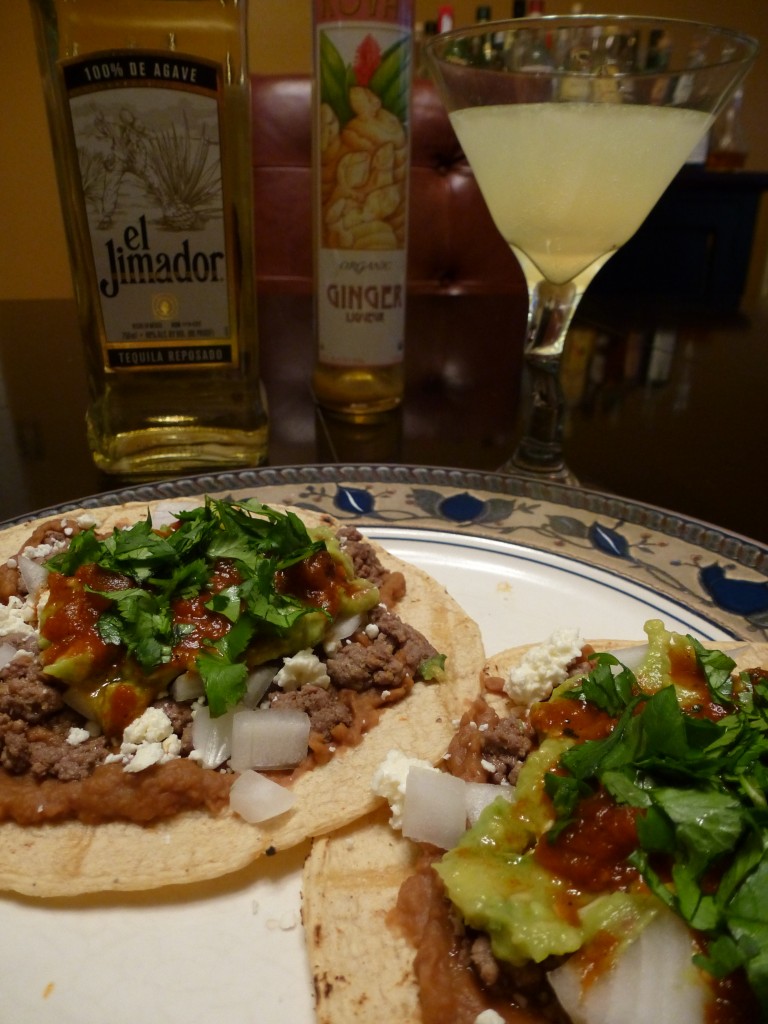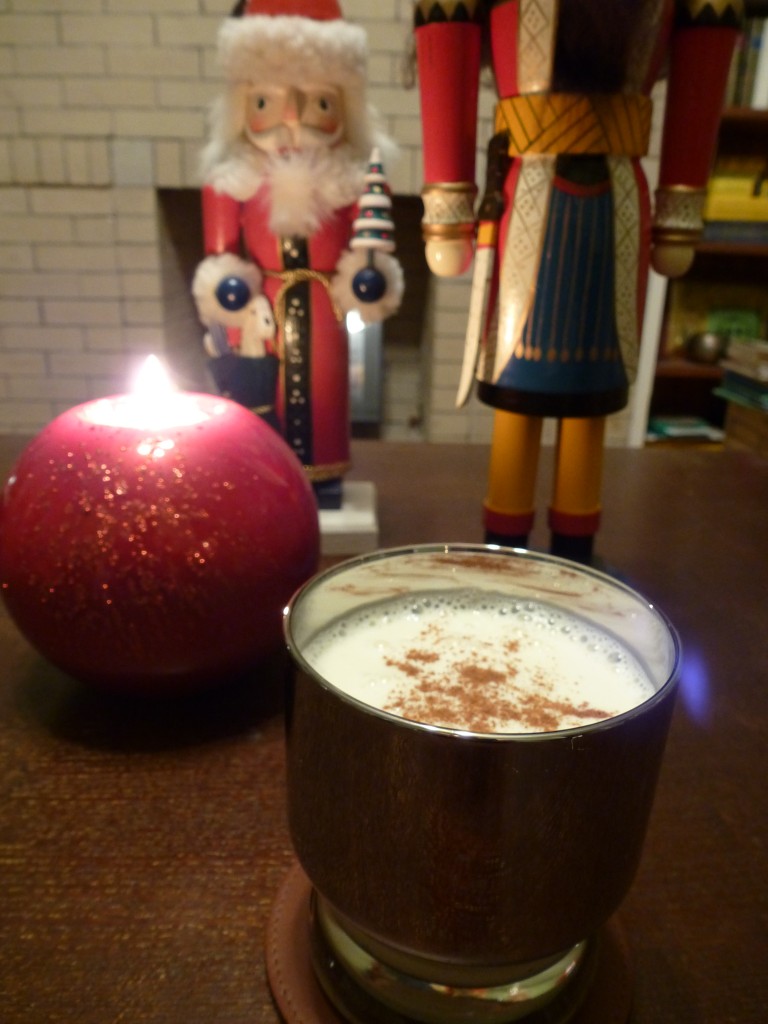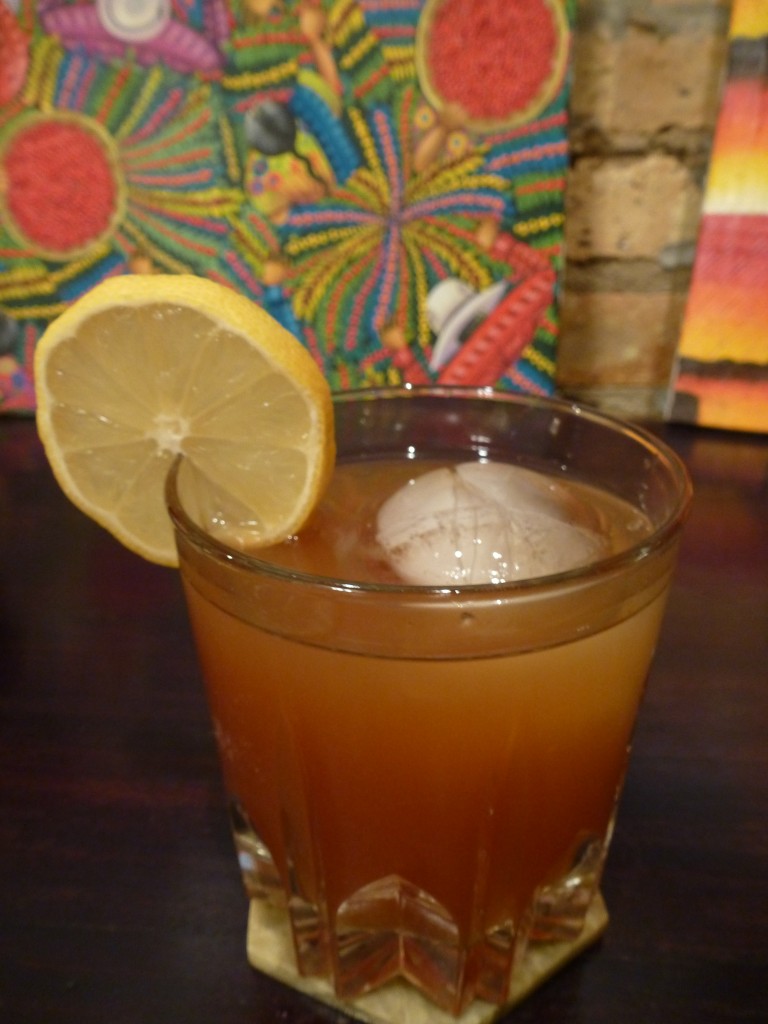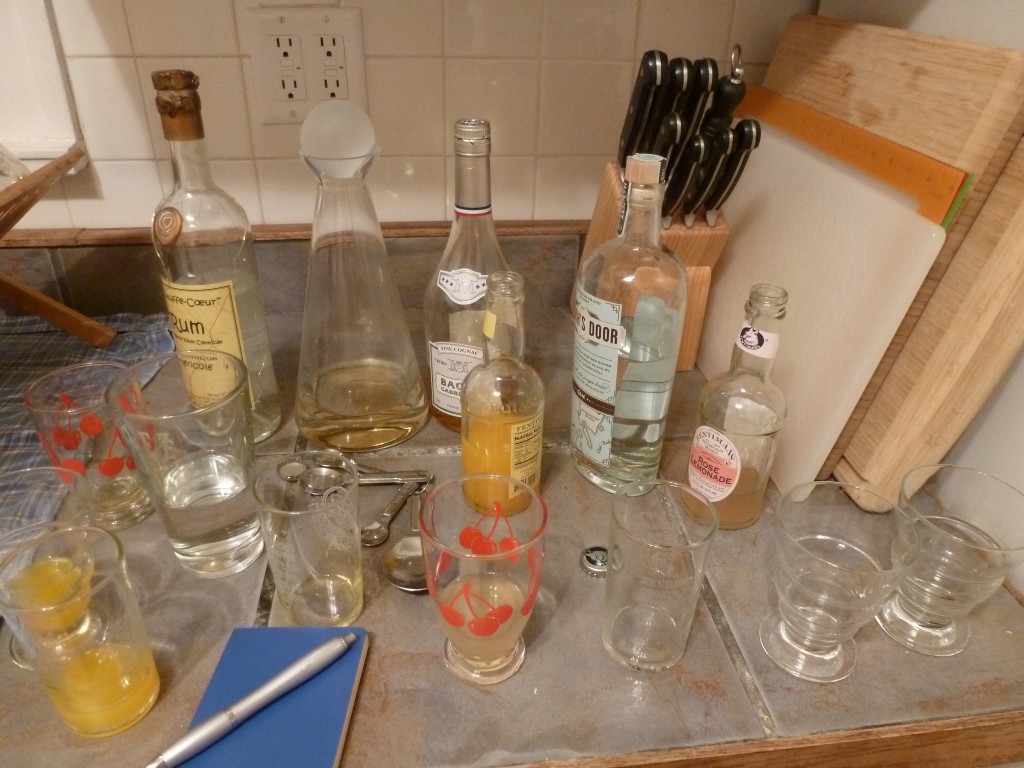Lemon Ginger Margaritas For Taco Night
 As much as I enjoy drinking unusual wines, spirits and cocktails, sometimes I drink them out of simple necessity. Last Saturday evening, for example, I just wanted to make myself a simple margarita to drink with the tacos we prepared for dinner (see my favorite traditional margarita recipe here). Unfortunately, Whole Foods was under Easter siege during our shopping trip, and in my haste to escape, I neglected to buy any limes. All we had was a solitary lemon. If I wanted a margarita, it would have to be an unusual one.
As much as I enjoy drinking unusual wines, spirits and cocktails, sometimes I drink them out of simple necessity. Last Saturday evening, for example, I just wanted to make myself a simple margarita to drink with the tacos we prepared for dinner (see my favorite traditional margarita recipe here). Unfortunately, Whole Foods was under Easter siege during our shopping trip, and in my haste to escape, I neglected to buy any limes. All we had was a solitary lemon. If I wanted a margarita, it would have to be an unusual one.
As the saying goes, when life gives you lemons, make Lemon Ginger Margaritas. I had lemon and ginger on my mind in the wake of my experimentation with Koval Ginger Liqueur. Produced in a distillery just down the street, this liqueur worked well with vodka, bourbon, and cognac, so why not tequila? And fortunately, it tasted delicious with lemon as well.
The recipe of tequila, lemon juice, and ginger liqueur followed a classic mixology trinity: One Spirit, One Liqueur, One Juice. That gave me some hope. But lemon with tequila? Surely it’s been tried before, and surely it’s failed. After all, it’s not that hard to find strawberry, raspberry, mango, and even banana margaritas, but when is the last time you saw lemon? I felt less than optimistic, and I prayed this wouldn’t be a repeat of the Chimayó debacle.
I juiced the lemon, combined the ingredients in the shaker, and shook with fingers crossed. The result looked appealing, and it had a pleasantly citrusy smell. I took a sip, and it actually tasted quite good! The cocktail started off sweet, then moved to juicy citrus, a tight tartness, some smoke from the tequila, and finally an aftertaste of ginger. Paired with the tacos (actually tostadas topped with beans, beef, cheese, onions, guacamole, salsa and cilantro), the cocktail gained some zesty spiciness.
It’s a very fun drink, with a very easy recipe:
LEMON GINGER MARGARITA
–2 parts Tequila (I used El Jimador Reposado, but any decent reposado or gold tequila should do the trick.)
–1.5 parts Ginger Liqueur (If you can’t find Koval‘s organic ginger liqueur, Stirrings makes a perfectly fine substitute.)
–1 part Freshly Squeezed Lemon Juice (There’s no substitute for this. Use bottled juice or sour mix at your peril.)
–Splash of Simple Syrup (Available bottled, or make it yourself: simmer a cup of water, dissolve a cup of sugar in it, and let cool.)
Juice a whole lemon, and use the amount of juice you get as the measure of one part. Combine the lemon juice, tequila and ginger liqueur in a shaker with ice. I recommend adding the splash of simple syrup as well. The sugar enhances the flavors and rounds them out. You can make this cocktail without the simple syrup and it will taste fine, but a small splash really does wake it up. Shake vigorously, and strain into a large martini glass. Garnish, if you’re feeling fancy, with a slice of lemon or a strip of fresh ginger.
Cheers!








